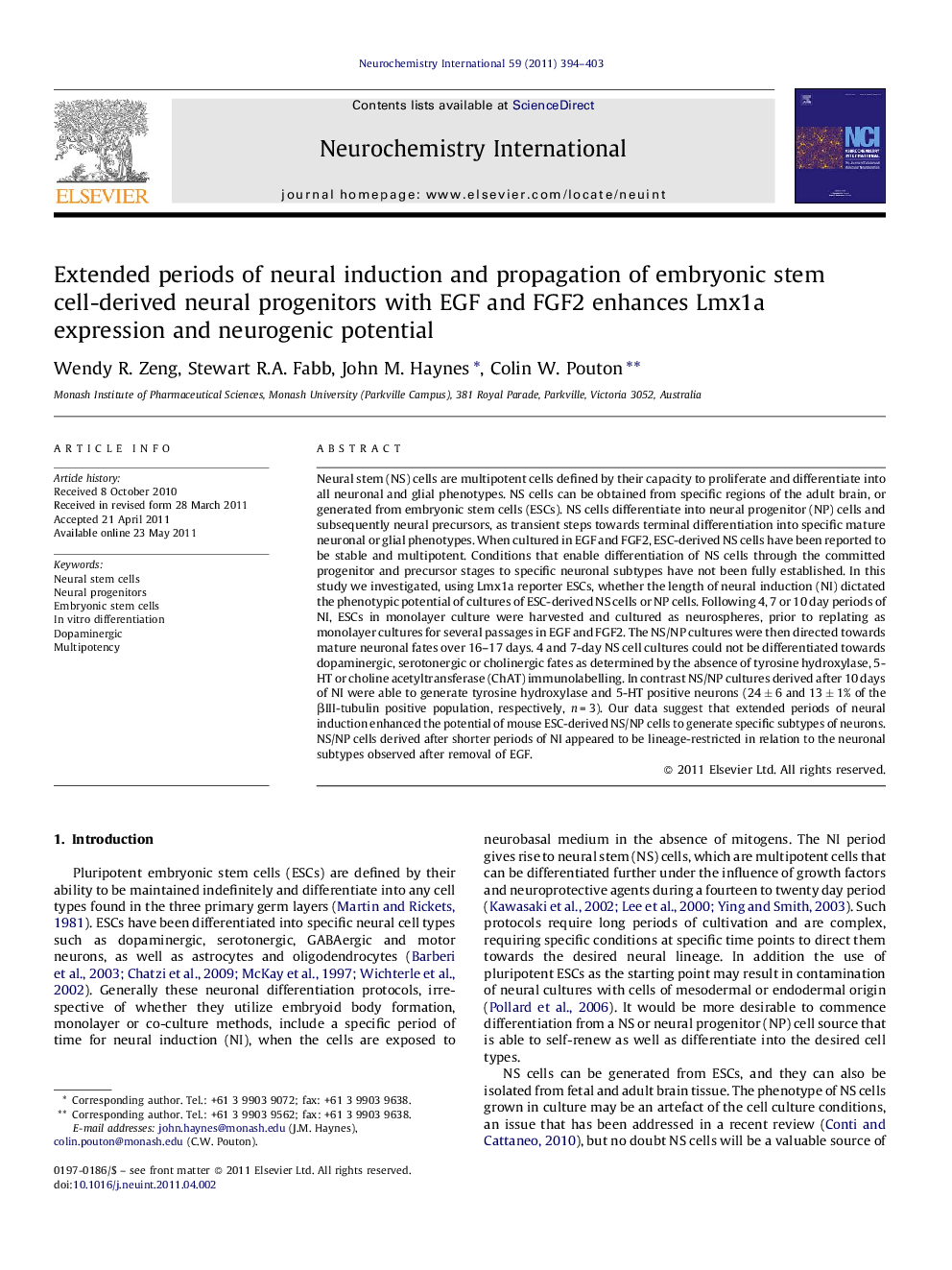| کد مقاله | کد نشریه | سال انتشار | مقاله انگلیسی | نسخه تمام متن |
|---|---|---|---|---|
| 2201256 | 1100007 | 2011 | 10 صفحه PDF | دانلود رایگان |

Neural stem (NS) cells are multipotent cells defined by their capacity to proliferate and differentiate into all neuronal and glial phenotypes. NS cells can be obtained from specific regions of the adult brain, or generated from embryonic stem cells (ESCs). NS cells differentiate into neural progenitor (NP) cells and subsequently neural precursors, as transient steps towards terminal differentiation into specific mature neuronal or glial phenotypes. When cultured in EGF and FGF2, ESC-derived NS cells have been reported to be stable and multipotent. Conditions that enable differentiation of NS cells through the committed progenitor and precursor stages to specific neuronal subtypes have not been fully established. In this study we investigated, using Lmx1a reporter ESCs, whether the length of neural induction (NI) dictated the phenotypic potential of cultures of ESC-derived NS cells or NP cells. Following 4, 7 or 10 day periods of NI, ESCs in monolayer culture were harvested and cultured as neurospheres, prior to replating as monolayer cultures for several passages in EGF and FGF2. The NS/NP cultures were then directed towards mature neuronal fates over 16–17 days. 4 and 7-day NS cell cultures could not be differentiated towards dopaminergic, serotonergic or cholinergic fates as determined by the absence of tyrosine hydroxylase, 5-HT or choline acetyltransferase (ChAT) immunolabelling. In contrast NS/NP cultures derived after 10 days of NI were able to generate tyrosine hydroxylase and 5-HT positive neurons (24 ± 6 and 13 ± 1% of the βIII-tubulin positive population, respectively, n = 3). Our data suggest that extended periods of neural induction enhanced the potential of mouse ESC-derived NS/NP cells to generate specific subtypes of neurons. NS/NP cells derived after shorter periods of NI appeared to be lineage-restricted in relation to the neuronal subtypes observed after removal of EGF.
► Short neural induction (NI) restricted the lineage potential of neural stem cells grown in FGF/EGF.
► Regardless of the differentiation protocol, four and seven day NI cultures gave rise to few neurons.
► Ten day NI enabled the robust generation of tyrosine and tryptophan hydroxylase positive neurons.
Journal: Neurochemistry International - Volume 59, Issue 3, September 2011, Pages 394–403